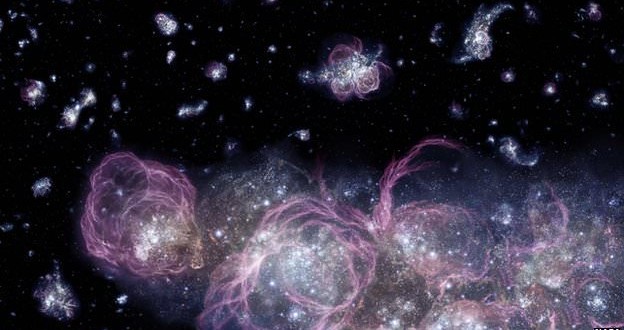Astronomers have discovered a low-mass star that exhibits the peculiar chemical abundance ratios associated with the process of creating new atomic nuclei in a first-generation massive star.
Over the past thirty years, astronomers have conducted large-scale investigations to find low-mass, metal-poor stars formed in the early Universe. Spectroscopic studies have identified stars that have the abundance patterns associated with the first stars, with several tens of solar masses and large amounts of carbon and other light elements. However, no previous research has found the signature of supernova explosions of very-massive stars with more than 100 solar masses, which synthesize large amounts of iron but little carbon.
The current team, including researchers from the National Astronomical Observatory of Japan (NAOJ), Konan University and the University of Hyogo in Japan, used the High Dispersion Spectrograph mounted on the Subaru Telescope to conduct a high-resolution spectroscopic follow-up of a large sample of low-mass metal-poor stars.
They discovered a star, SDSS001820.5-093939.2 (SDSS J0018-0939), that exhibits a very peculiar set of chemical abundance ratios. Whereas the star contains an amount of iron 300 times lower than the Sun’s, it is significantly deficient in lighter elements such as carbon and magnesium. The extremely low abundances of elements other than iron indicates that this star formed directly from a hydrogen gas cloud that contained elements dispersed by a first-generation massive star.
Nucleosynthesis models for supernova explosions of massive stars, which successfully reproduce the abundance ratios found in most of the early-generation stars previously known do not readily explain the chemical abundance ratios observed in the newly discovered star.
Rather, explosion models of very-massive stars can explain both the relatively high abundance ratio of iron as well as the low abundances of lighter elements. This means that this star most likely preserves the elemental abundance ratios produced by a first-generation very-massive star.
The discovery of a star that could have recorded the chemical yields of a first- generation very-massive star will stimulate further modeling of the evolution of very-massive stars and the nucleosynthesis processes that occurred during their explosions. If more detailed modeling of the elemental abundance patterns in this star confirms the existence of very-massive stars, this new discovery will help to focus our understanding of the formation of the first stars and the birth of the elements.
The strong UV radiation, energetic explosions, and production of heavy elements from very-massive stars influence subsequent star as well as galaxy formation. If stars with masses up to 1,000 solar masses existed, their remnants are probably black holes with several hundred solar masses, which may have formed the “seeds” of super-massive black holes, such as found in the Galactic Center.
Further research to find early generations of low-mass metal-poor stars is necessary to estimate the proportion of very-massive stars among the first stars. If very-massive stars are relatively common, next-generation large telescopes such as the Thirty Meter Telescope (TMT) and the James Webb Space Telescope (JWST) will have the potential to directly detect groups of such first stars in studies of the most distant galaxies
Agencies/Canadajournal
 Canada Journal – News of the World Articles and videos to bring you the biggest Canadian news stories from across the country every day
Canada Journal – News of the World Articles and videos to bring you the biggest Canadian news stories from across the country every day



